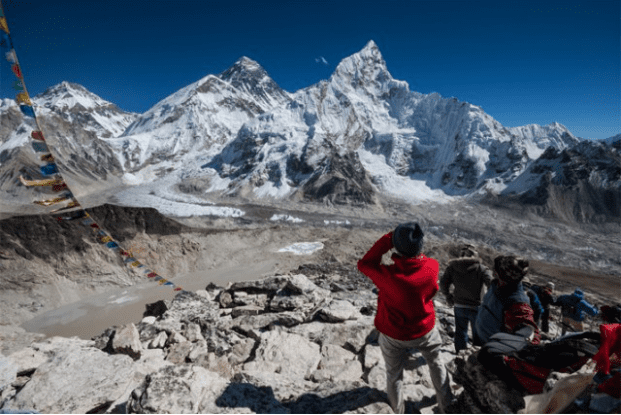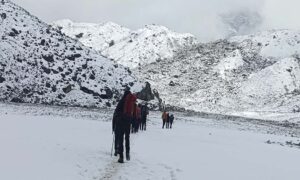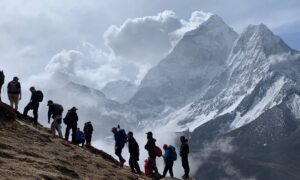If you’re planning to go on an Everest Base Camp Trek, there are some important tips to keep in mind. These tips include everything from ensuring that you’re prepared for altitude sickness to keeping yourself warm.
Layering helps regulate body temperature
Layering is an essential part of staying warm during Everest Base Camp trek. It is a system of dividing clothing into layers that help regulate your body temperature. This helps keep you warm in extreme temperatures while keeping moisture from getting into your body.
When hiking in a high altitude, it is important to wear a hat. The brim should be wide to protect your head from the cold. Hiking socks are also a must for your feet. Make sure they are light weight, but not too flimsy.
For extra protection, it is a good idea to bring along a pair of sunglasses. UV rays are stronger at higher elevations, so it is a good idea to protect yourself from the sun.
You should also bring a sleeping bag. The sleeping bag is one of the most important items you will need during your trek. A quality sleeping bag should be able to keep you comfortable and warm.
Another layer that can help you regulate your temperature is a pair of thermal socks. These provide cushioning and help your feet breathe.
Mental endurance is equally as important as physical fitness
While it’s true that physical fitness is important for Everest Base Camp Trek 10 Days, mental strength is just as important. The trek is a long and tiring one, and having a positive attitude is essential to success. Whether you are just starting out or have been to the mountain before, a little training will pay off.
A great way to start is to run. It’s also a good idea to try swimming, cycling or rowing. Each of these exercises builds cardiovascular endurance, which means that your heart and lungs work harder. And they also build a strong core.
Once you’ve gotten into a routine, consider incorporating some strength training into your regimen. You can do push ups, sit ups, crunches and pull ups, all of which strengthen your muscles. Make sure you are doing them at a comfortable pace, and increase the weight slowly. This will help make your trek more enjoyable.
Another important part of your preparation is altitude training. You can simulate this by walking up hills as often as possible. Depending on your fitness level, you may be able to do this indoors on a treadmill.
Managing sleeping space in a base camp
It is easy to see why Everest base camp is one of the most popular treks in the world. If you’re planning to visit the mountain, you’ll need to pick the right time of year to ensure that you get the most out of your experience.
The best season to explore the Everest is the pre-monsoon season. This is usually around January to May. Also known as the ‘green season’, it is the time of year when the Nepalese weather is at its finest. However, it can also be the most difficult for travellers, with monsoons making it more difficult to get to Everest base camp.
Luckily for you, there are plenty of options for making the most of your trip. For example, you can opt for an all-inclusive package, or go for a more independent approach. All-inclusive packages include accommodation, meals, transport, and other essentials, leaving you to focus on the trekking part.
Aside from the all-inclusive package, you’ll also want to consider the weather conditions. Weather can delay your flight, and can cause the trek to take much longer than planned.
Symptoms of altitude sickness
Acute mountain sickness (AMS) is a disease that affects people who travel to high altitudes. It is caused by inadequate acclimatization. Symptoms include headaches, difficulty breathing, restlessness and dizziness.
If a person suffers from AMS, they should seek medical attention immediately. Failure to do so can lead to coma and even death. There are several types of AMS.
The most common symptom of AMS is high altitude headache. Headaches are usually intense and can last five days or longer. Several other symptoms are nausea, vomiting, dizziness, loss of appetite, and a rapid pulse.
Severe cases of AMS may result in cyanosis, disorientation, lethargy, and inability to walk in a straight line. For some people, these symptoms develop into high altitude pulmonary edema. This condition can cause coughing pink sputum, shortness of breath, and tightness in the chest.
If you suffer from high altitude sickness, you need to drink plenty of water and eat low-calorie meals. You should also stop taking sedatives.



































